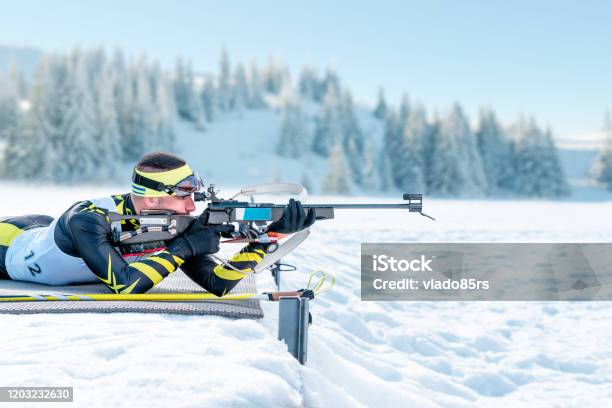Unveiling the Intricacies of Biathlon: A Sporting Fusion of Endurance and Precision
In the realm of winter sports, the thrill of skiing and the precision of shooting are often seen as distinct, each requiring a unique set of skills and training methods. However, there is one sport that dares to combine these seemingly disparate disciplines into one spectacular spectacle of endurance, precision, and strategy: the biathlon. This article unravels the fascinating world of this unique winter sport, tracing its historical roots and unfolding its current trends, while shedding light on the training methods that make a successful biathlete.

An Unusual Pairing: The Genesis of Biathlon
The roots of the biathlon can be traced back to survival rather than sport. In the snow-laden regions of Scandinavia, hunting on skis was a necessary skill for survival. Soldiers also adopted skiing and shooting as a military tactic, and by the 18th century, Scandinavian armies were conducting ski-shooting competitions. This military origin laid the foundation for the modern biathlon, which emerged as an official sport in the 1950s. Since then, the biathlon has evolved, continually refining its rules, equipment, and techniques to become the thrilling sport we know today.
On Thin Ice: Current Trends in Biathlon
Modern biathlon is a dynamic and continually evolving sport. Innovations in ski and rifle technology have led to faster, more efficient performances, while changes in race formats have introduced new strategic elements. Today’s biathletes have to navigate a complex blend of physical endurance, precise shooting, and strategic decision-making. The rise of data analytics in sports has also influenced biathlon, with athletes leveraging detailed performance data to refine their training and race strategies.
The Making of a Biathlete: Training and Performance Strategies
The unique demands of biathlon require a distinct training approach. Biathletes need to develop both their endurance for cross-country skiing and their marksmanship skills for shooting. These elements are often trained separately, with endurance training involving a mix of distance and intensity workouts, while shooting training focuses on accuracy and consistency under varying levels of physical stress. Balancing these two components is a constant challenge, and the key to success lies in seamlessly integrating them in competition.
The Trial of the Track: Benefits and Challenges of Biathlon
The sport of biathlon offers numerous benefits, from the health gains of a rigorous cardiovascular workout to the mental discipline developed through precision shooting. However, it also poses unique challenges. The physical strain of skiing coupled with the need for calm, steady shooting is a formidable test of endurance and control. Furthermore, the weather often plays a crucial role, making adaptability a vital skill for any successful biathlete.
From Snowy Slopes to Olympic Glory: Biathlon’s Real-World Impact
Biathlon’s appeal extends beyond its sporting complexity. As a sport that originated from survival and military skills, it carries a rich cultural significance, particularly in snow-bound regions where it originated. It’s also a sport that emphasizes the importance of balance and control, qualities that resonate in many aspects of life. Today, biathlon is a highlight of the Winter Olympics, where it captivates audiences worldwide with its unique blend of endurance, precision, and strategy.
In conclusion, biathlon offers a fascinating study in the power of fusion – merging two distinct disciplines into a thrilling and strategic sport. Its roots in survival and warfare have evolved into a rigorous and rewarding athletic pursuit, embodying the essence of endurance, precision, and adaptability. As a sporting spectacle, it stands as a testament to the limitless potential of human performance. Whether you’re an aspiring biathlete or a passionate sports enthusiast, the world of biathlon offers a unique perspective on the ever-evolving landscape of sports.




